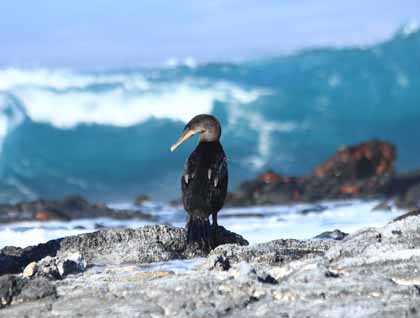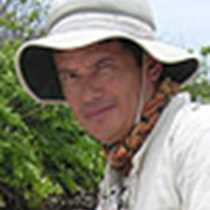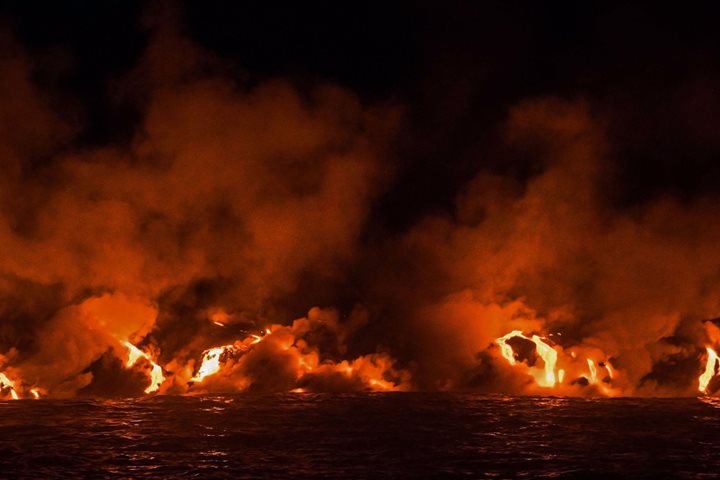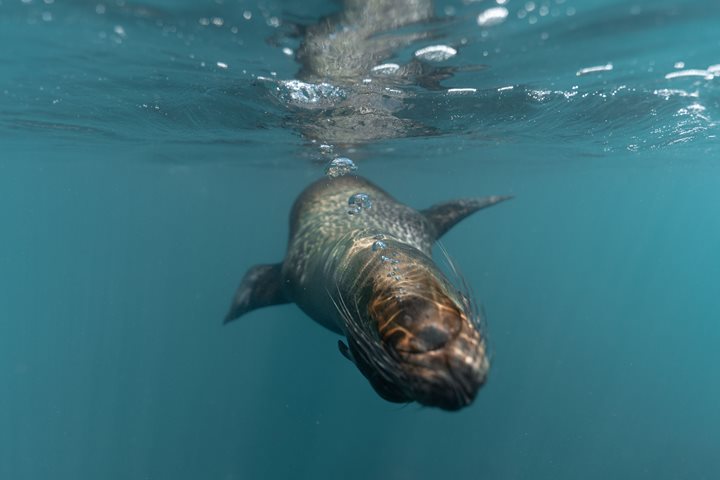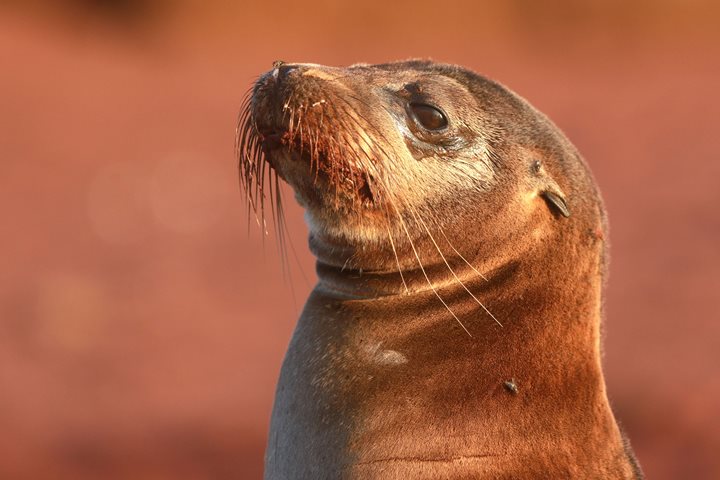After a long navigation from Rábida Island early in the morning we finally arrived to the north of Isabela along the westernmost of Galapagos where the youngest islands are found. Early in the morning our guests had the chance to go in search of marine mammals who are feeding on the abundant food around Bolivar Channel that separates Isabela and Fernandina Islands. We were lucky to spot a pod of bottled nosed dolphins bow riding the National Geographic Islander. Our guests were delighted by all of the dolphins around the ship and the pre-breakfast marine mammal sightings were a perfect way to start our day.
After crossing the equator we went on a Zodiac ride along the coast of Isabela, observing many blue footed boobies sitting on the tuff cones as well as noddy terns and brown pelicans. We were surprised by a Galapagos penguin swimming indifferently next to the Zodiac. It was observing us and then disappearing as fast as a torpedo, chasing some small salemas or mullets. The geology here was fascinating, the brown tuff meeting together with the black lava flows and the rusty barren area with several Galapagos flightless cormorants on the shoreline. We observed their courtship with the males swimming behind, synchronizing their movements and then on the rocks, collecting some seaweed for the females. Life was plentiful in the water and we saw a great number of razor surgeon fish, pelicans, sea turtles, king angel fish and rays. We went snorkeling into a nice protected cove that held plenty of Pacific green sea turtles resting on the bottom and some others on a cleaning station where fish come to eat the algae off their shells. Penguins, rays and cormorants were also seen in the water.
After lunch, we disembarked on the youngest of the Galapagos Islands, Fernandina Island. It is a place like no other, as if we traveled in time to a place that had been untouched by humans. With high tide, rough ocean, and big waves that flooded the seashore, we began our visit. Because of the ocean conditions, the marine iguana population was concentrated on the rocks, making it possible to see them warming each other up. Walking along the trail life was visible everywhere. There were flightless cormorants performing their mating rituals, boobies diving for fish, baby sea lions experiencing the shallow waters for the first time while the adults where surfing the big waves off shore. It was just incredible, it seemed like everything was happening at the same time and it was all special. The activity makes one think about how successful life is on this young island. With the last beams of sun we headed back to the National Geographic Islander observing the beautiful sunset, the last gift of this day in paradise.

